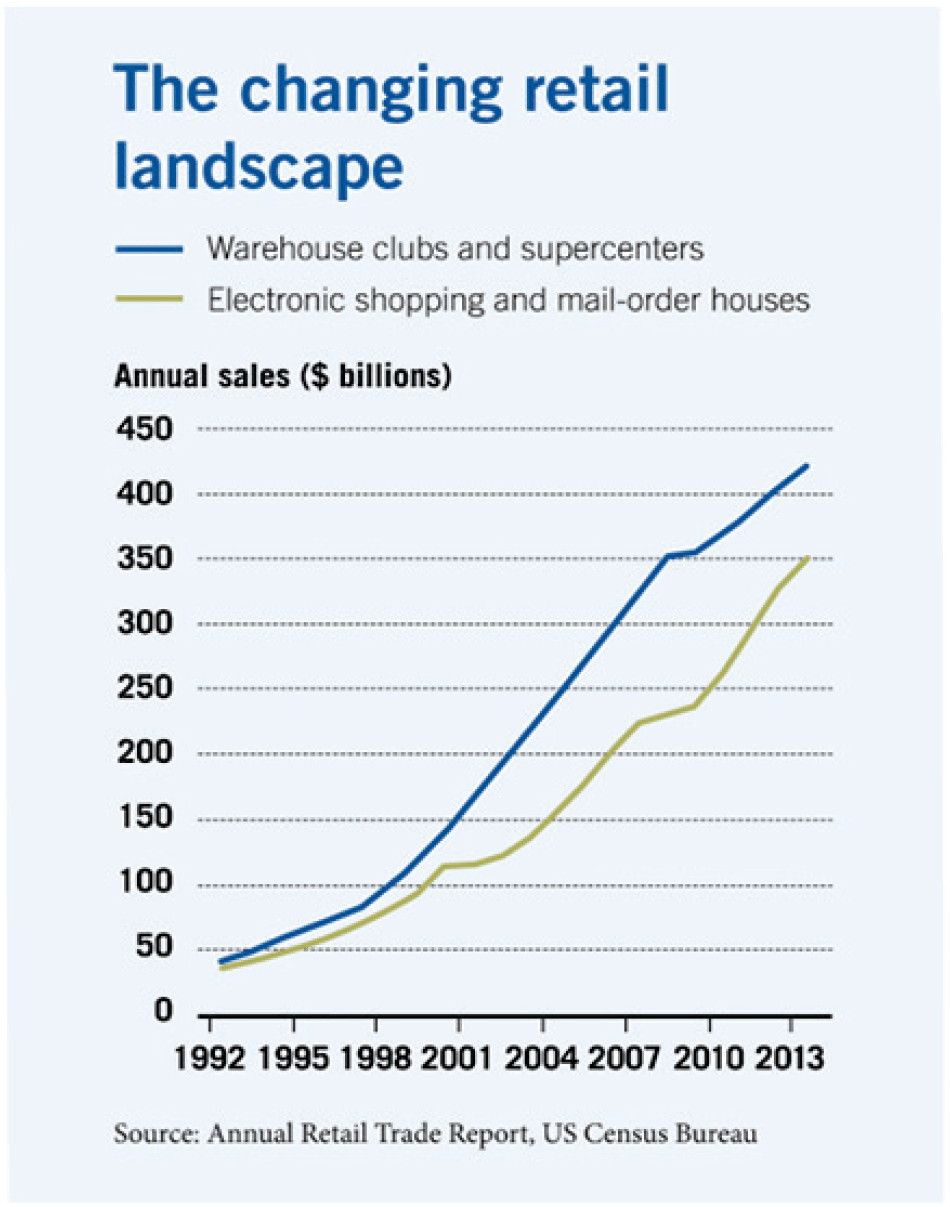
What the Growth of Big Business Means for Jobs
The number of workers large companies typically employ in a single place has fallen.
What the Growth of Big Business Means for JobsHow Costco, not Amazon, is responsible for the death of your local Sears
Warehouse clubs and superstores have made a bigger impact than e-commerce on the retail sector

While e-commerce saw a tenfold rise in sales, warehouse clubs and superstores grew even faster.
Ali Hortaçsu and Chad Syverson, “The Ongoing Evolution of US Retail: A Format Tug-of-War,” Journal of Economic Perspectives, Fall 2015.

The number of workers large companies typically employ in a single place has fallen.
What the Growth of Big Business Means for Jobs
Susan Athey, chief economist at the US DOJ’s antitrust division, joins hosts Bethany McLean and Luigi Zingales to discuss new draft merger guidelines.
Capitalisn’t: The Most Important Guidelines You Didn’t Know About
How the excess savings of the US’s wealthiest households may be feeding a cycle of inequality and instability.
Who Is Fueling America’s Debt Binge?Your Privacy
We want to demonstrate our commitment to your privacy. Please review Chicago Booth's privacy notice, which provides information explaining how and why we collect particular information when you visit our website.